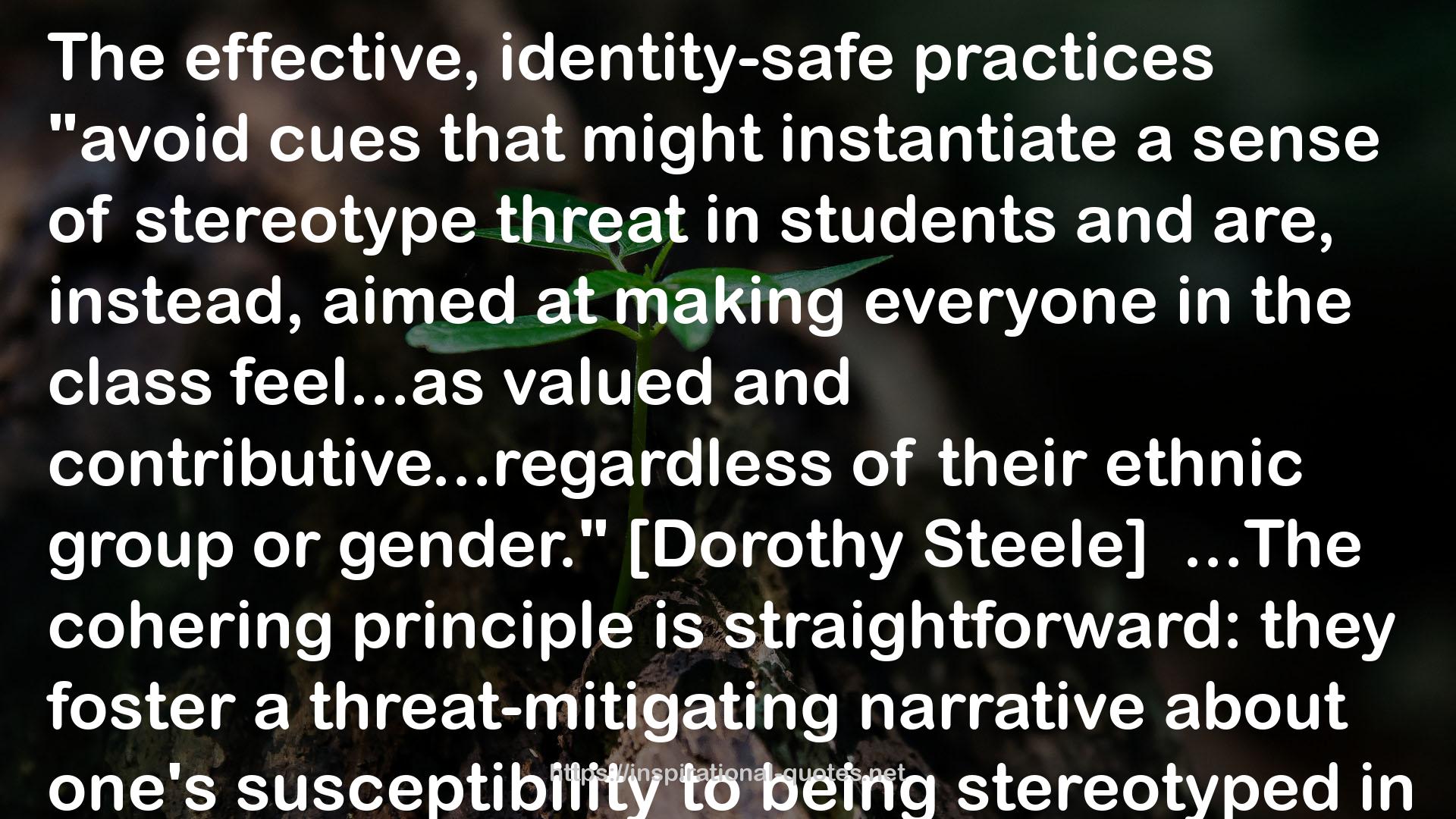" The effective, identity-safe practices "avoid cues that might instantiate a sense of stereotype threat in students and are, instead, aimed at making everyone in the class feel...as valued and contributive...regardless of their ethnic group or gender." [Dorothy Steele]
...The cohering principle is straightforward: they foster a threat-mitigating narrative about one's susceptibility to being stereotyped in the schooling context. And though no single, one-size-fits-all strategy has evolved, the research offers an expanding set of strategies for doing this: establishing trust through demanding but supportive relationships, fostering hopeful narratives about belonging in the setting, arranging informal cross-group conversations to reveal that one's identity is not the sole cause of one's negative experiences in the setting, representing critical abilities as learnable, and using child-centered teaching techniques. More will be known in the years ahead. But what we know now can make a life-affecting difference for many people in many important places. "
Image for Quotes

...The cohering principle is straightforward: they foster a threat-mitigating narrative about one's susceptibility to being stereotyped in the schooling context. And though no single, one-size-fits-all strategy has evolved, the research offers an expanding set of strategies for doing this: establishing trust through demanding but supportive relationships, fostering hopeful narratives about belonging in the setting, arranging informal cross-group conversations to reveal that one's identity is not the sole cause of one's negative experiences in the setting, representing critical abilities as learnable, and using child-centered teaching techniques. More will be known in the years ahead. But what we know now can make a life-affecting difference for many people in many important places." style="width:100%;margin:20px 0;"/>